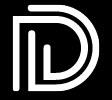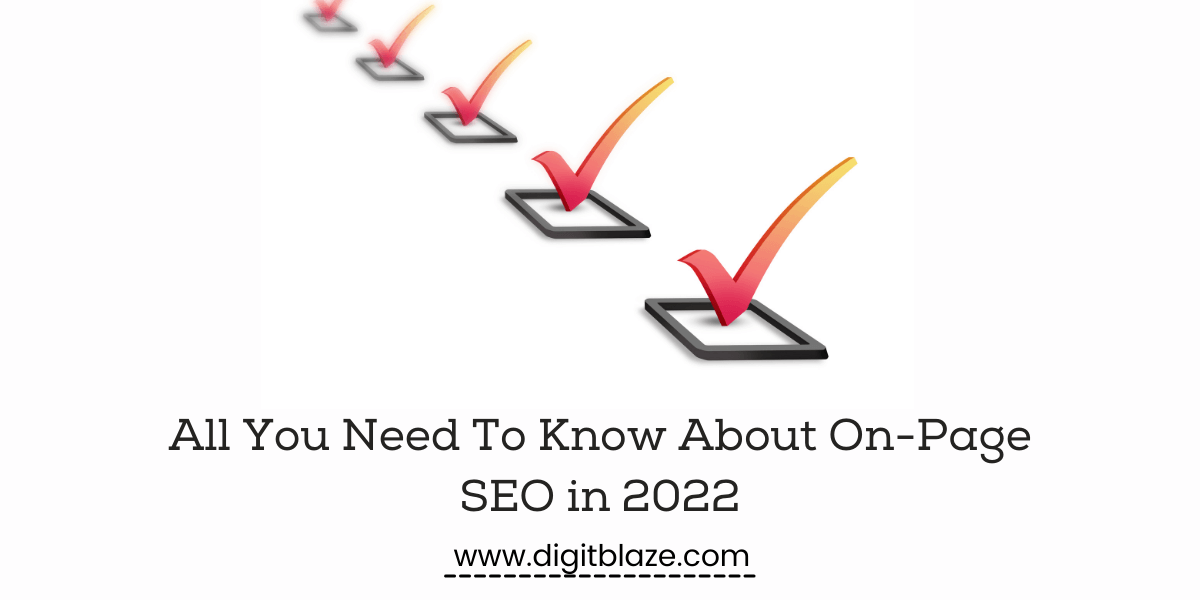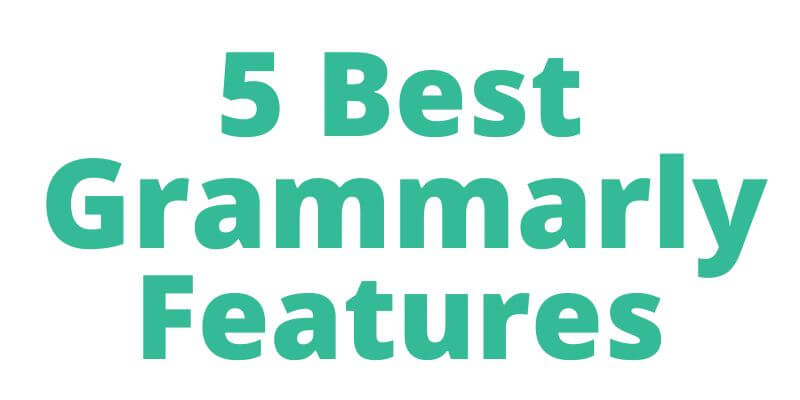Step by Step On-Page SEO Checklist Guide
Hello, welcome to my blog. In this article I will list the ON-Page SEO checklist Guide that will help you rank better on search engines like Google and Bing.
When you are just getting started with your online business and start working on getting more traffic you realize you need to learn SEO ( search engine optimization).
During this research you are most likely to come across these terms,
ON-Page SEO
OFF-Page SEO
In this article I will be focusing on ON-Page SEO
All this might seem little overwhelming at the beginning, but with time and practice you learn and understand how to implement all this.
I myself have been there so I can understand you, so without wasting time lets dive into the Checklist Guide.

What is ON-Page SEO?
In very simple terms ON-Page SEO is optimizing your website like your posts, pages, themes, title tags, images, internal links, loading speed, etc to create a better on-page user experience so that search engine bots understand what your page is all about when crawling.
Why ON-Page SEO is important?
On-Page SEO is a technique where you optimize your website and content page so that it becomes easy for search engines to crawl and identify whether the searched query is answered efficiently and to the point or not.
To Answer your Question – Why is it important?
Doing On-Page SEO will help you get your pages to get indexed well, which will help you get more organic traffic.
Most of the traffic comes from organic searches from the search engines like Google and Bing.
Organic traffic is the most important source of traffic as it is going to come for years, which means more revenue for years.
Let’s understand this,
if you have written good content and have not done the SEO practice as per Google, your content would take a long time to rank or even might not rank.
So when you write good content, your job is to get ranked fast for the queries your content is made for.
For all this to happen you must do ON-Page SEO.
10 On-Page SEO Checklist Guide
When I first started, I was not aware of On-Page SEO practice as in
What is On-Page SEO?
How to implement it on your website?
As I was getting less organic traffic, I started doing research on How to get more organic traffic.
This is where I came across the word ON-Page SEO.
After learning and implementing these 10 point On-page SEO checklist I started seeing good results.
Let’s take a look at each point and learn How to implement them.
1. Meta Title
Meta Title is the title of your post that people will see on search engines like Google and Bing when they have searched for a query related to your post content.
The main purpose of writing a good SEO-optimized meta title is to get more organic clicks from the search engines like Google and Bing, helping us to get more organic traffic.
In simple terms, the meta title is like telling search engines that my content is specific to this title, so show it as a top result when people are searching for the relevant query.
How to write a Good Meta Title?
- Be very specific and to the point about what your post going to be about.
- Add your Focus keyword in the title
- Use Power words like Best, Exclusive, Discover, etc
- Try to convey Benefits
- Use psychological Triggers like learn, solve, proven, etc
- Keep it as short as possible.
- Don’t repeat the Focus keyword in the H1 tag title.
Use these free tools to check your Meta Tile
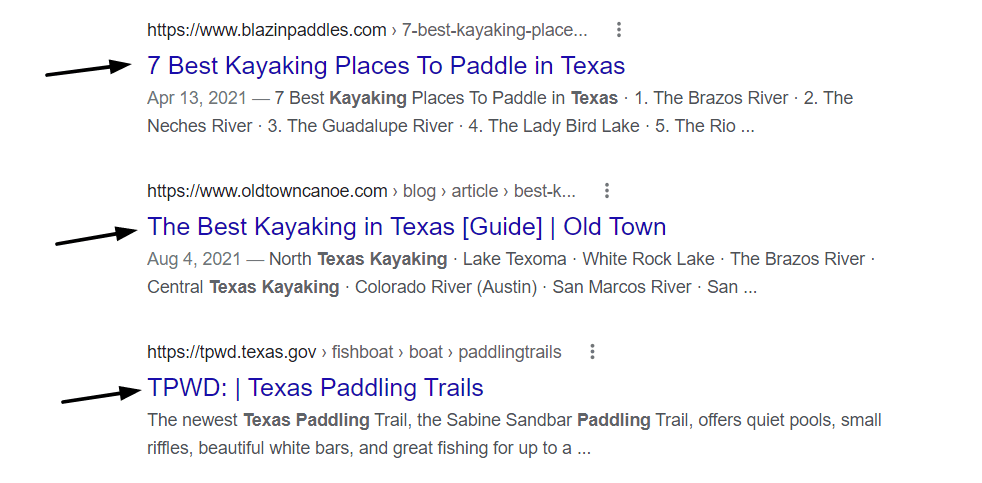
2. Post Permalink Structure
Permalinks are the permanent URL links of posts, pages categories, or any other content on your blog website. It is like the address of your specific content on your website.
When getting started you don’t even feel this like might be an important factor in On-page SEO, but let me tell you it is important to make your permalink URL SEO friendly.
There are just two things that you need to consider to make your permalink URL SEO-friendly.
- The URL should have your focus keywords
- The URL should be short, to the point, and very specific.
There are 6 different types of permalinks as seen in the image below, but as a beginner, you should opt for postname only.
Don’t touch the other 5 options.
Once you are experienced enough to understand how to create SEO-friendly URLs you can use custom structure permalinks as well.

3. Header Tags
Header tags are heading tags that are used in the form of an HTML tag in the heading and subheading of your blog post article.
The main purpose of the header tags is to let Google crawlers know what topics should be given priority and How?
There is a specific hierarchy sequence of importance in header tags.
There are 4 types of header tags that you use, lets’s take a look at these header tags.
H1 – This tag is used in the main title of the blog post which includes the focus keyword of the post giving the basic gist of your blog to the reader.
H2 – This is the second most important tag, which is used for subheadings of the post.
H3 – These tags are used under H2 tags as subheadings to narrow down your point.
H4 – Same as H3 tags, these are used to narrow down a point that you want to make under the H3 tag.
H5 & H6 – These tags are used to organize & narrow down further.
Use these tags strategically in your blog post to organize your content to make it SEO-friendly.
This will help your post rank better.

4. Keyword Density
Keyword density is the number of times you have used the Focused keyword in your blog post.
It is basically like telling the search engines and the searchers, this post information revolves around this focused keyword.
In earlier days of SEO, keyword density was used as keyword stuffing, as in people would stuff the keyword many times in a single blog post, even if it is making the content meaningless or irrelevant.
And the bad thing was, this used to work. Fortunately, Google changed many policies due to the increase in lack of quality content, and such posts started getting downgraded.
How to Keyword density?
- Use the focused keyword in your first paragraph specifically in the first hundred words, somewhere in the middle where it fits right, and in the last paragraph.
- Use a Free version plugin like Rank Math, which helps you to know the keyword density, and also helps you to up your game with ON-Page SEO.
- Use the long Tail keyword along with the focused keyword in the first paragraph.
- Use it in H1 and H2 headings at least once.
- Keep your keyword density in between the range of 1.5% to 4% per thousand words.
Using the keyword density in SEO is a good strategy, but don’t overdo it by stuffing the keyword, or else your content will be flagged by Google and will not get ranked.
Always remember your main focus should be creating only high-quality content, and use these strategies to get ranked.
5. Meta Description Tag
In simple terms, Meta Description is the snippet that the search engine will show under the title of your page that is being ranked and displayed for the query searched around your content.
Optimizing the meta description is very important as it will give a clear idea to the searcher, what the content is all about? leading them to click on your link.
When writing a meta description remember to keep it short, to the point, and very specific about what you want to tell people from this blog post.
Use the focused keyword in your meta description.
Optimizing the meta description is a good strategy to get ranked and get more organic traffic.
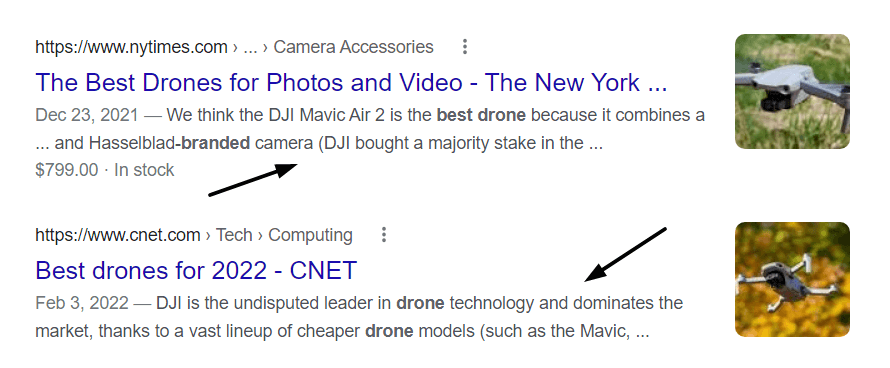
6. Image optimization
Using images is very good way to increase engagement, but there is a way to use these images when it comes to image SEO.
- Images Size – Use small size images to keep the speed of your site high.
You can use plugins like tinypng to convert big-size images to small ones without affecting the quality of the image.
Using heavy images slows down the loading speed which affects user engagement.
Rather than using stock images use original images like screenshots, this enhances the user engagement.
- Alt Text – Alternative text is the description of the image to tell why the image is used here. This text is shown in browsers where it fails to load the image so that the reader knows the context of the image.
The text is also useful for people with visual disabilities, as it can be used to read them out, giving the context of the image.
Tips to write Good Alt text
- Use the focused keyword in the image
- Keep it short, to the point and specific
- Don’t add text to images that are just used for decorative purposes.
- Don’t add “Image of” or “Picture of”
- You can use any relevant small paragraph from your post as well
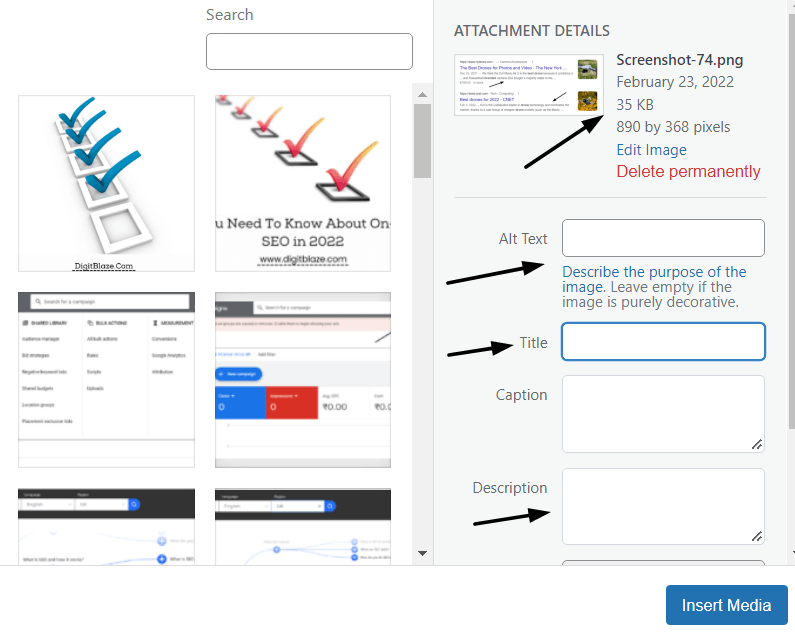
7. Adding Schema
Schema markup is the HTML code that you add to your website that helps the search engine understand better what your site is all about, and can use it to display as a rich snippet of your site, like star rating or phone number, etc.
Using this tactic can improve the click-through rate because it helps to ease the process of searching for the searcher,
For example, if someone is looking for a dentist and google comes up with your site with a good star rating and phone number, he or she will immediately visit your site or will contact you.
If you are a beginner don’t engage with schema markup as this is little advanced SEO, for now just understand that this is also a part of On-Page SEO.
If you want to learn how to add schema to your wordpress site without any plugin here is a good resource click here
If you want to learn how to do it with the Rank Math SEO plugin click here

8. Use of Table of Contents
When the articles become longer like 2000 to 5000 words it becomes difficult for the reader to navigate through the post.
Creating a Table of Content helps the reader to navigate to the exact query they are searching for.
This creates a good user experience, which can turn a reader into a repeat visitor to your site.
This might seem a basic SEO tactic but it very effective tactic.
9. Linking Strategy
There are two types of linking that you need to don your site, let’s take a look at them.
- Internal Linking
In simple terms, internal linking is linking your most relevant posts to each other, so that the visitor gets some additional information related to the topic.
Internal linking helps to increase the engagement on your site, and also spreads the traffic throughout the site.
When doing internal linking remember that the post you link to each other should be relevant to the topic that the visitor is reading or else you are going to damage the user experience and engagement.
If you are a beginner you can do it manually, but once you have reached to the high number of posts on your site like 300 to 500 this becomes difficult to do it manually,
To help you with that there are many plugins available that can help you with that.
- External Linking
In simple terms, when you link some other site in your blog post which is relevant to your content as a resource or for more in-depth content is called external linking
When doing external linking you should always check the quality of the content and website.
If it is not good don’t link, but if you still want to link for some reason then use the nofollow tag to the link.
In my suggestion, you should only link to sites that have established authority in the niche.
10. Setting up Google Search Console
Google Search Console is a free SEO tool that is created by Google itself. Using this tool properly will help you with On-Page SEO.
There are mainly 3
- Sitemaps – Creating your sitemap and submitting it on the search console will help Google know all the activities on your site.
- Indexing – You can monitor all the posts that are indexed and that are excluded here. If you think there is a post that has good content and should be indexed, you get the option to request indexing. Getting indexed is very important as it helps you get ranked.
- Mobile-Friendly Test – As most of the traffic comes from the mobile it becomes very important to monitor whether your site is mobile-friendly or not. On the search console, you can perform the mobile-friendly test to identify
if there are any errors that are affecting the mobile user experience.
If there are any errors, you get the reason for it, with which you can sort the issue on your site to make it mobile-friendly.
Conclusion
Follow this 10-point checklist guide to improve your On-Page SEO.
When getting started go slowly and implement one strategy at a time.
Do not rush to all the points at once, this can overwhelm you.
I hope you found this On-Page SEO checklist guide helpful.
Also, see
What is Google Search Console and How to use it?
12 Powerful Tips To Help You Create SEO Friendly Content
How To Optimize Your Website For Search Intent: A Comprehensive Guide
